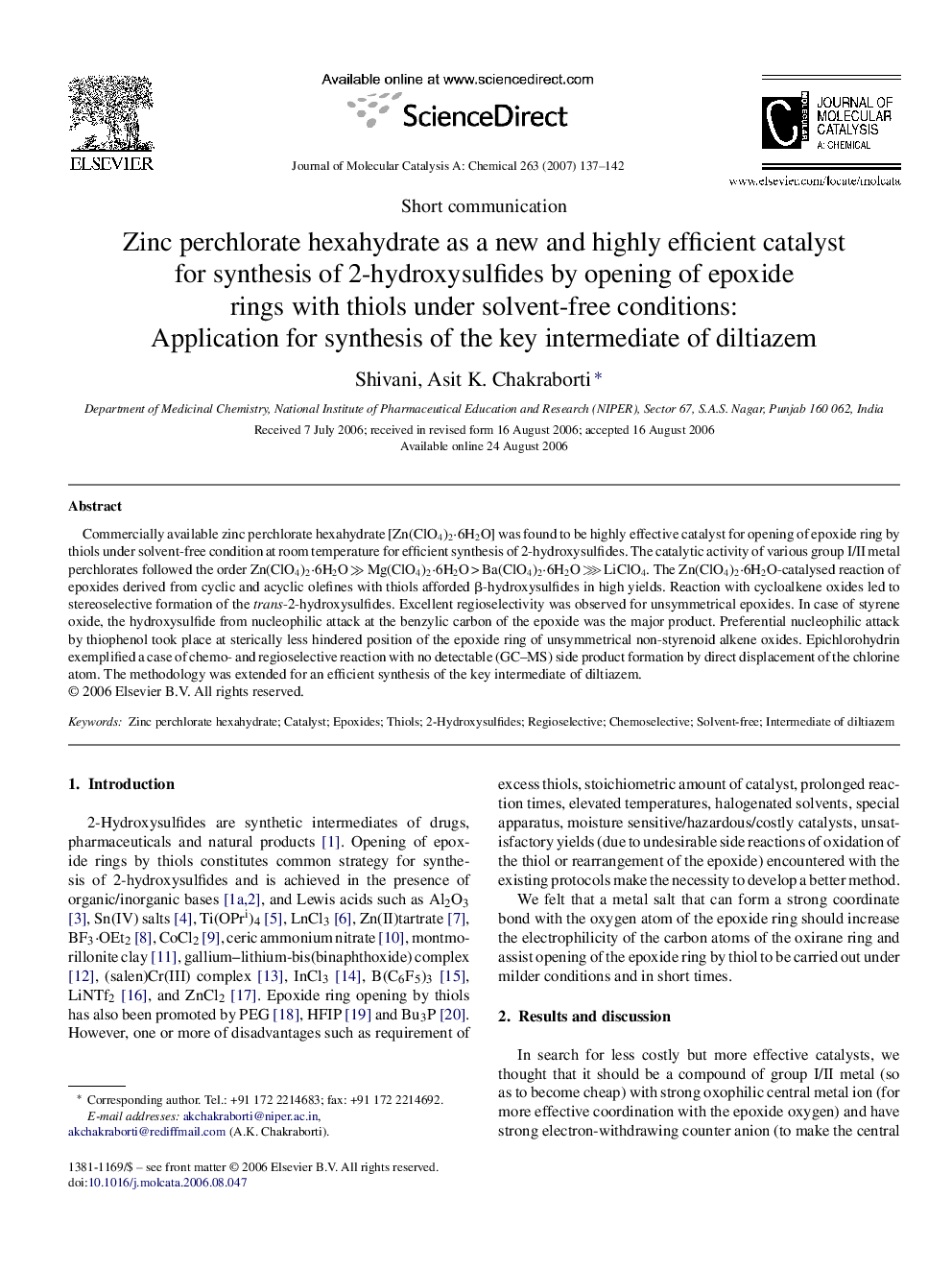| Article ID | Journal | Published Year | Pages | File Type |
|---|---|---|---|---|
| 68389 | Journal of Molecular Catalysis A: Chemical | 2007 | 6 Pages |
Commercially available zinc perchlorate hexahydrate [Zn(ClO4)2·6H2O] was found to be highly effective catalyst for opening of epoxide ring by thiols under solvent-free condition at room temperature for efficient synthesis of 2-hydroxysulfides. The catalytic activity of various group I/II metal perchlorates followed the order Zn(ClO4)2·6H2O ≫ Mg(ClO4)2·6H2O > Ba(ClO4)2·6H2O ⋙ LiClO4. The Zn(ClO4)2·6H2O-catalysed reaction of epoxides derived from cyclic and acyclic olefines with thiols afforded β-hydroxysulfides in high yields. Reaction with cycloalkene oxides led to stereoselective formation of the trans-2-hydroxysulfides. Excellent regioselectivity was observed for unsymmetrical epoxides. In case of styrene oxide, the hydroxysulfide from nucleophilic attack at the benzylic carbon of the epoxide was the major product. Preferential nucleophilic attack by thiophenol took place at sterically less hindered position of the epoxide ring of unsymmetrical non-styrenoid alkene oxides. Epichlorohydrin exemplified a case of chemo- and regioselective reaction with no detectable (GC–MS) side product formation by direct displacement of the chlorine atom. The methodology was extended for an efficient synthesis of the key intermediate of diltiazem.
Graphical abstractFigure optionsDownload full-size imageDownload as PowerPoint slide
